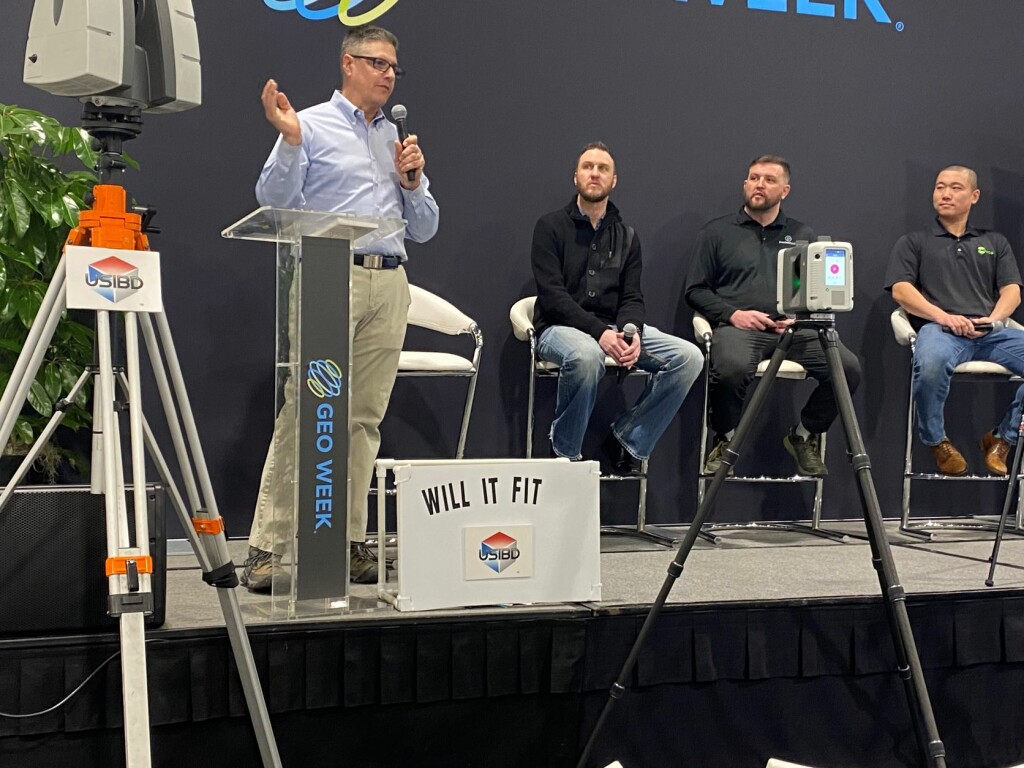It’s now somehow already been a week since the end of Geo Week 2023, an extremely successful event bringing together industries to connect for the future of geospatial, the built world, and really almost every piece of industry moving forward. The show featured a keynote from Jack Dangermond, and another covering the AEC industry’s readiness for digitalization. In addition, there was a packed exhibitional hall featuring speaking sessions and the top companies in the industry welcoming in attendees, and a packed speaker session catalog covering every corner of the geospatial and built worlds.
In addition to all of these, the United States Institute of Building Documentation (USIBD) held a unique event throughout the Geo Week show, presenting on the final day. The organization set out to showcase a wide range of available terrestrial laser scanning technology and showing how they compare to each other. It wasn’t so much meant to showcase which piece of equipment is better than others, but rather how they differ and what their resulting point clouds look like.
Taking part in the discussion was the following panel members:
John Russo, President, USIBD
Christopher Kercheval, Reality Capture Specialist, Topkerv Consulting
Leo Zhang, Virtual Construction, The Conco Companies
Drew Seward, Reality Capture Operations Manager, Precisionpoint, Inc.
Dustin Manning, Owner, Luxepoint
The scanning took place on the first day of the event, with three types of targets at different distances being captured by scanners. This included flooring, being scanned at five meters, reflective materials being scanned at 20 meters, and other assorted objects found on typical job sites at 10 meters. These were scanned by the participating companies, a list that included places like RIEGL, FARO, Leica, Z+F, and others of the industry’s top names, with the results being processed by a handful of participating software vendors, each of whom received a randomized sample of data. It was an interesting showcase of how different machines capture different pieces of data, and working towards some industry understanding and standardizations being brought forward by USIBD.
In addition to simply showing off the results of these scanning efforts, the panel also discussed some of the goals for the organization and answered many questions about the state of the industry from a highly engaged audience. One of the most interesting pieces to come out of that was the group’s desire to create a standardized spec sheet for these scanners. Every company lists all of the relevant data points for their products, but they can be organized in different ways, making comparison more of a heavy lift. Kercheval introduced USIBD’s plan to make a standardized sheet, still covering the same information but a way to hopefully make shopping and comparison easier for the end users.
The group also talked about the future of this type of event and their desire to continue, both with more companies showing off their technology as well as with other types of scanners. Specifically, there was certainly an appetite in the audience, and one reciprocated by the panel, to hold a similar event at some point in the future for mobile scanners. This is a growing industry with a growing number of options, and these types of talks, ideas, and presentations are crucial for customers to make the most informed decisions possible.






